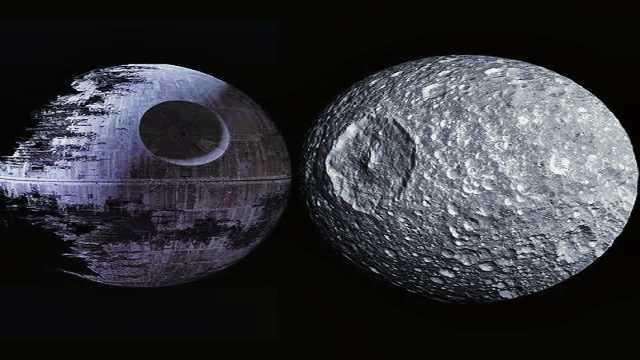Saturn’s moon Mimas, often referred to as the “Death Star Moon” due to its striking resemblance to the iconic space station from the Star Wars franchise, has recently captured the attention of scientists and astrobiologists alike.
New research suggests that this icy moon may possess the conditions necessary to support life, making it a fascinating subject for further exploration.
The Unique Features of Mimas
Mimas is one of Saturn’s many moons, measuring about 396 kilometers (246 miles) in diameter. Its most notable feature is the large impact crater known as Herschel, which gives it a distinctive appearance reminiscent of the Death Star. However, beyond its striking looks, Mimas has characteristics that intrigue scientists regarding the potential for life.
Recent studies indicate that beneath its icy surface, Mimas may harbor a subsurface ocean. This hypothesis is supported by data collected from NASA’s Cassini spacecraft, which orbited Saturn from 2004 to 2017. The spacecraft’s observations revealed that Mimas experiences slight gravitational variations, suggesting the presence of liquid water beneath the ice. Water is a crucial ingredient for life as we know it, making Mimas a candidate for astrobiological research.
The Potential for Life
The idea that Mimas could contain life is exciting, but it also raises questions about the types of organisms that might exist in such an environment. If a subsurface ocean does exist, it could be similar to the oceans found on other icy moons, such as Europa and Enceladus, which have shown evidence of hydrothermal activity and chemical interactions that could support microbial life.
Astrobiologists are particularly interested in the potential for extremophiles—organisms that thrive in extreme conditions—to inhabit these hidden oceans. If Mimas has the right chemical ingredients and energy sources, it could potentially support life forms that are vastly different from those on Earth.
Future Exploration
The prospect of life on Mimas has sparked interest in future missions to explore this intriguing moon. While current technology may not allow for immediate exploration, scientists are advocating for missions that could further investigate Mimas and its potential subsurface ocean. Such missions could provide valuable insights into the habitability of icy moons and the broader search for extraterrestrial life in our solar system.
Conclusion
Saturn’s moon Mimas, with its Death Star-like appearance and potential subsurface ocean, presents an exciting opportunity for scientific discovery. As researchers continue to study this icy moon, the possibility of finding life beyond Earth becomes increasingly tantalizing.
Mimas serves as a reminder of the mysteries that our solar system holds and the ongoing quest to understand the conditions that could foster life in the most unexpected places.

